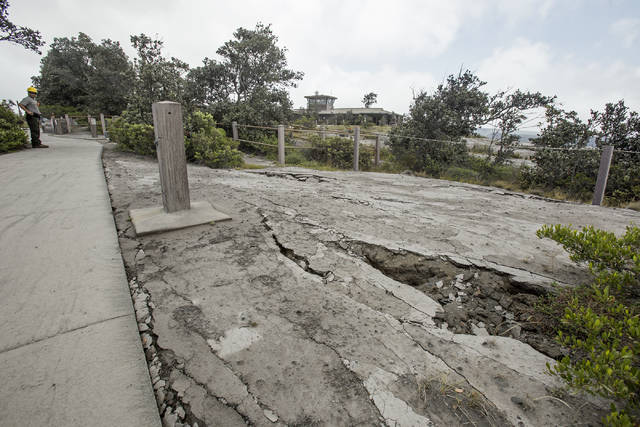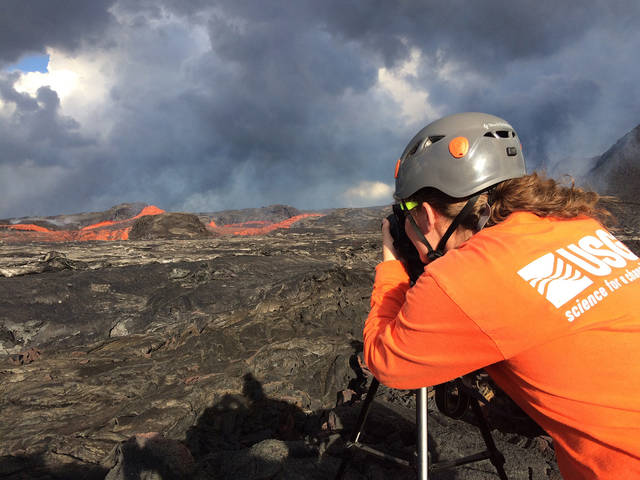The U.S. Geological Survey is continuing to search for a new home for the Hawaiian Volcano Observatory after it was displaced from the edge of the Kilauea caldera last year.
Janet Babb, HVO geologist and spokeswoman, said potential locations are being looked at on Hawaii Island and even on Oahu, where there is no volcano threat.
Consideration of the latter got the attention of U.S. Sen. Mazie Hirono, who raised it while questioning Interior Secretary nominee David Bernhardt in Washington, D.C. USGS falls under the Department of the Interior.
“That doesn’t seem to make a lot of sense,” Hirono was quoted as saying in a press release.
Bernhardt said he would look into it.
Babb said options being considered include other locations within Hawaii Volcanoes National Park.
The HVO office and Jaggar Museum, both facilities owned by the park, are considered irreparable following dozens of caldera collapses last year.
“We’re looking for a long-term permanent home,” she said. “Those planning efforts are examining a multitude of options including ones on the island of Hawaii. Oahu has been mentioned.
“But it’s not any more or less likely than other options that are on the table.”
Babb said it’s not known how long that decision could take.
In the meantime, HVO staff are located at temporary offices near the harbor and at the University of Hawaii at Hilo.
She said they plan to move to a consolidated location at the former Hilo Iron Works building in April or May.
As for why Oahu is an option on the table, Babb referred comment to USGS spokesman Paul Laustsen, located at the USGS communications office in Washington, D.C.
“USGS is still in the process of working with Congress and other stakeholders to determine the best solution for HVO, one that will allow us to provide appropriate monitoring and maintain working relationships on the island and within the emergency management community,” he said in an email.
“Our HQ staff will be back on Monday, and at that time, can elaborate on this answer and add details to your specific questions.”
HVO had been located at Kilauea for more than a century, and its presence predates creation of the national park.
Babb said the park is where the geologists would prefer to be.
“I think if we based a decision on how we feel in our hearts, we’d like to be back in the national park,” she said.
However, she said they will do their jobs monitoring Hawaii’s volcanoes no matter where their office is located.
“The work of monitoring Hawaiian volcanoes has continued uninterrupted, just as it was last summer,” Babb said.
“And will continue to be during our upcoming move.”
Email Tom Callis at tcallis@hawaiitribune-herald.com.











